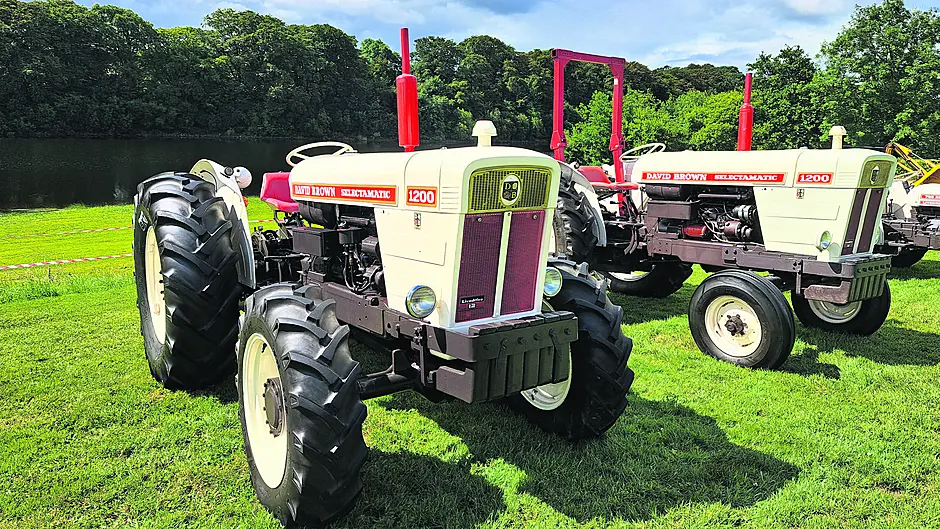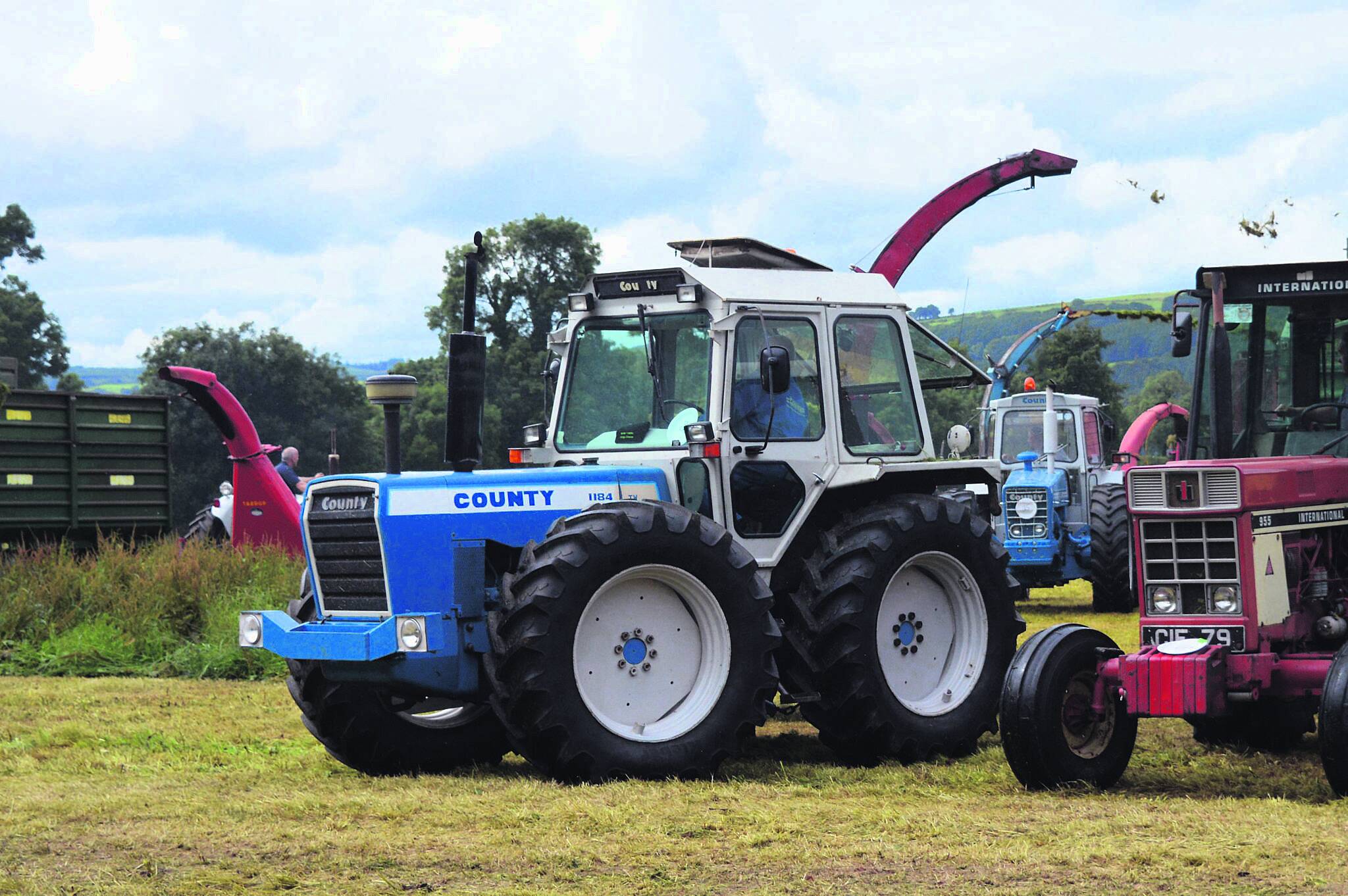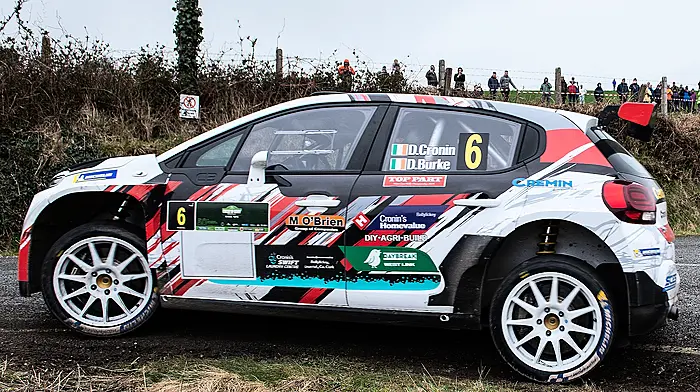Peter O’Brien reflects on some of the pioneers of four-wheel drive in tractors.
This article was featured in our West Cork Farming magazine – you can read the full magazine here!
Since the original concept of the tractor, manufacturers and operators alike have been striving to increase power and traction, both intertwined and reliant on the other.
Four-wheel drive is something that the operator of a modern tractor pays little heed to – a push of a button or flick of a switch leads to a seamless engagement of drive to the front axle, greatly aiding traction.
Before the advent of four-wheel drive, steel cage wheels and strakes (adjustable spikes) were employed successfully reduce wheel slip.
When one thinks back to the 50s, 60s and 70s, a vast amount of land reclamation, drainage and work on marginal land was completed with tractors which although were light, were not 4wd.
Before the 1980s, 4wd was somewhat of a luxury with the majority of tractor manufacturers (with the notable exception of Zetor) not offering the system as a factory-fitted option.
While horsepower broke through the 100hp barrier, its advantages were somewhat hindered by the lack of traction.
It’s hard to believe that John Deere, Ford and Massey Ferguson pursued 4wd articulated tractors ahead of on their existing conventional tractors.
Instead, these big players relied on imported axles from the continent such as Carraro, Schindler, Selene, ZF or Kramer.
In the UK, many specialist companies capitalised on the gap in the market building their own tractor which proved highly successful, albeit short-lived.
County
The County name is synonymous with equal-wheeled, high horse power, four-wheel drive tractors.
Established in Fleet, Hampshire, England in 1929, the firm initially converted lorries, before moving to crawler tractors and ultimately equal wheel four-wheel drive tractors.
These tractors started life as Ford skid units which were built upon by County who honed in on the market niche for their specialist four–wheel drive machines, with a large amount of tractors exported overseas.
Four-wheel drive was County’s speciality, while County’s niche was – which to this day still is – equal wheel specialist tractors.
Many people associate the County name with their impressive 1184TW or 1884TW. However, the concept and design of these tractors can be traced right back to 1960s.
County were no stranger to Ford tractors, converting many Power Majors to crawler tractors in the 1950s.
County took the Super Major skid unit as the basis for their first mass produced equal wheel four-wheel drive tractor.
The County formula hardly changed over the years.
Each front wheel receives power from the rear half axle which had its own drive shaft that travelled along either side of the engine to the massive front wheel hubs on a new heavily engineered front axle.
This allowed for exceptional traction thanks to the driven front wheels as well as a full front axle differential lock.
Muir-Hill
Manufactured in Gloucester, Muir Hills are instantly recognisable by their yellow and white paintwork, straight line styling and equal size wheels.
Muir Hill took elements of the Ford tractors – mainly rear axles and gearboxes, mated them with powerful Perkins or Ford engines and created their own four-wheel drive tractor around them. Muir Hill did however design their own bodywork for their tractors.
Launched in 1966, the Muir Hill 101 is powered by a Ford industrial 5.9l engine producing a considerable 101hp.
The 101 weighs just over four tons, with a similar lift capacity and features Muir Hills in house designed axles with hydraulic brakes and hydraulically operated differential locks on both axles, as well as CV joints on the front hubs allowing for traction through a wide arc of movement.
Muir Hill also modified the Ford gearbox with heavier bearings. The engine of the 101 was later upgraded in 1971 to the Ford 2715E, which increased power to 120hp.
The Muir Hill had two trump cards. Firstly, its tight turning circle of 16ft makes it quite manoeuvrable.
While County employed a drive shaft to each front hub, Muir Hill used a central drive shaft to the front axle which greatly improved its manoeuvrability.
Dual ram hydrostatic steering was another added benefit.
Secondly, Muir Hill used a dropdown transfer gearbox which sends drive to the front axle from the Ford 8speed transmission though a 14’ clutch which helped to maintain height and 16’ worth of ground clearance, its drive shaft nestled safely into the belly of the tractor.
Interestingly, the common theme of all of the above three companies is the use of Ford Tractor components.
However, the majority of tractors in the 70’s could be converted to 4wd using outsourced axles.
In 1979, Ford released the TW series high horsepower tractors built in Antwerp, Belgium, which were now fitted with an off-set four-wheel drive front axle from the factory (supplied by ZF), which ultimately marked the end of the aforementioned three companies.
By the early 80s, 4wd gripped, dug in and pulled manufacturers with it with tractors in almost all horsepower categories offered with the system.
Worthy of note is that 4wd also made tractor operation safer on hilly or slippery terrain both up and downhill, with the extra advantage of four-wheel braking. Automatic four-wheel braking became the mainstay in the 90s which further added to safety.
Roadless
Hounslow in Middlesex was the home to Roadless Traction which was founded by Philip Johnson in 1919.
A long serving British Army engineer, Johnson had reached the rank of lieutenant colonel by the time he had retired.
More interestingly, he had been heavily involved in tank development during the WW1 and using this knowledge and patents, specialised in track conversions, including crawlers and half-tracks for the agricultural sector, before producing 4wd conventional tractors.
No stranger to 4wd with the successful unequal wheel Roadless Ploughmaster 75 & 95 tractors, Roadless made a bold move in 1968 releasing its first equal wheel 4wd tractor, the 115, which was a direct challenge to the other two major British specialist 4wd equal wheel manufacturers, County and Muir-Hill.
To be successful, Roadless needed a unique selling point, and in fact, they had three.
The 115’s centre of gravity was significantly lower than the Muir-Hill, the 115 was more manoeuvrable than the County, and furthermore the 115 had an excellent weight balance ratio of 60:40 over the front axle thanks to the use of spacer between the engine and gearbox.
This had the effect of having a 50:50 weight distribution ratio over both axles when an implement was attached, ensuring maximum traction.
The 115 is based on the Ford 5000 tractor, however its 115hp comes from Ford’s 5.9l 2704E 6¬cylinder industrial engine.
Power is transmitted through Ford’s 8F2R gearbox using a 13” clutch.
Assisted by the heavy front axle and wheel weights, the 115 tips the scales just shy of five tons.
Roadless designed their own front axles for the 115 using cast steel, the assembly itself weighing one ton.
Drive was taken to the front axle via a centre drive shaft using a triple reduction technique – the differential, drop box and final drives in the front axle hubs.
Another interesting feature was the ability of the operator engage front and rear differentials simultaneously or just the front axle thanks to separate pedals.













